Helpful tips: how to properly grow and care for eggplants
Eggplant or blue ones from the nightshade family. Indian countries are considered their homeland. Later, blue vegetables appeared in China and Japan. This culture came to Russia only in the 17th century. In the central regions, eggplants are grown in greenhouse conditions, and in the southern regions, they are planted directly in open ground.
Vegetables are valued for their usefulness due to the content of protein, fiber, tannins, sugar, pectin and a whole range of vitamins and minerals.
Content
- Characteristics of culture
- Features of eggplant cultivation
- Eggplant seeds: selection and preparation
- Soil preparation and sowing
- Care advice
- How to grow eggplant
- Seedling planting rules
- Growing problems
- Diseases and pests
- The best varieties of eggplant
Characteristics of culture
The culture has an erect or spreading purple stem with leaves of green and lilac shades. Powerful root system can penetrate to a depth of one and a half meters. Flowers drooping bisexual. The culture is fertilized by self-pollination.
Fruits can weigh up to a kilogram or more and have different sizes, shapes and colors.
In Russia, the most common blue fruits are cylindrical in shape. Up to 15 vegetables can be harvested from one bush. Fruits take a long time to form. In early ripening varieties, this period is 80-130 days, and in late ones - 130-180 days. Seeds eggplants are small, flat in shape, yellowish in color. They are able to remain viable for an average of four years.
Features of eggplant cultivation
When growing blue ones, it should be remembered that these vegetables develop actively exclusively in a warm and humid environment. At a temperature of 21-26 degrees, the first shoots will appear in a week and a half, and for active growth and development, a temperature of 26-30 degrees is required. The blue ones do not tolerate frost. Temperatures below 10 degrees can destroy the plant within a few days.
If the blue ones do not have enough moisture, then they stop their growth, shed their color, and the fruit is not able to grow enough, has an irregular shape and becomes bitter. At the same time, excessive moisture leads to plant diseases.
In Russia, mainly early and middle varieties are cultivated, the growing season of which ranges from 100 to 150 days.
This stage is one of the most important when growing blue ones. You need to know that in some areas, the cultivation of these vegetables will not bring any results. These vegetables will grow well after Luke, cucumbers, cabbage, carrots, legumes and melons. And where his relatives grew up, as well tomato, pepper and physalis planting this culture is useless.
Eggplant seeds: selection and preparation
The correct choice of seeds is the key to a good harvest.Everyone chooses planting material according to different characteristics: shape, color, taste, size. But there are several general principles:
- planting material must correspond to the terrain
- the package must indicate: the manufacturer, the number of seeds, the time of their ripening and the method of processing
- F1 hybrid varieties are not suitable as planting material
- if the seeds are your own, then they are sorted and pre-sowing preparation is carried out
The sorted material is decontaminated to prevent diseases... For this, the seeds are soaked in a solution of potassium permanganate of one percent concentration for half an hour. Eggplant seeds take a long time to germinate, but this process can be accelerated by placing the material in a solution of ash or boric acid for several hours. You can also use growth stimulants.
Recommended germinate seeds before planting in the ground.
They need to be wrapped in a dampened cloth and placed in polyethylene, placed in a warm place for several days.
Soil preparation and sowing
For sowing seeds, a soil made of humus, peat and sand in a ratio of 3: 4: 1 is suitable. For one bucket of such a mixture, you need to add a glass of wood ash and 3 matchboxes of superphosphate. You can also use soil purchased from a flower shop.
Sprouted planting material is sown into moist soil to a depth of 1.5 cm, maintaining an interval of about two centimeters. Before planting, the soil is spilled in advance with a weak manganese solution. After sowing, the containers are placed in a plastic bag and placed in a warm place. The temperature should be at least 25 degrees. After the sprouts appear, the temperature should be reduced to 19 degrees and kept for about a week. This is done in order for the plant to develop roots.
Seeds are sown in February or March.
At this time, the daylight hours are still short, and the seedlings do not have enough light. For active development, it is necessary to artificially increase the daylight hours to 12 hours, including a fluorescent lamp. Seedlings do not tolerate drafts well.
After the appearance of a pair of real leaves, the seedlings should transplant... This is done by transshipment, about a month after the emergence of sprouts. The earth must be well moistened and the shoot must be removed along with the earthy clod. Then place in a large container.
Watering the eggplant:
- First watering after transshipment, they are carried out in 2-3 days, and after every 5 days.
- To water eggplant better in the morning.
- It is important to ensure that water does not fall on the leaves when watering. Excessive moisture leads to plant disease.
- A long drought leads to the death of the feeding roots and early lignification of the stem.
- If the weather is hot and dry, then it is worth reducing the interval between watering to three days.
- After each watering, it is worthwhile to loosen the soil a little and shallowly.
Top dressing:
- Seedlings eggplant must be fed. For the first time, the plants are fed 14 days after transshipment.
- The best are considered mineral fertilizerscontaining phosphorus and potassium. Will work well and chicken droppings... It should be diluted 1:20, but not fermented.
- You need to fertilize these nightshades every two weeks, increasing the dose of fertilizer from 1 to 5 tablespoons per bush.
1-2 weeks before planting seedlings in the ground, the seedlings need to be hardened. To do this, the plants are moved to a cooler and brighter room or taken to a greenhouse. When 4-5 pairs of leaves appear on the seedlings, then it can already be transferred to the site.
How to grow eggplant
The most effective methods of growing eggplant:
- Under a temporary cover made of film. With this method of cultivation, the soil must be prepared in advance. In the autumn time it must be dug up and brought in compost (approximately 5-7 kg per square meter of land). After wintering, the soil is dug twice, but already to a shallower depth and added fertilizers: potash, superphosphate, ammonium nitrate.The film shelter must be installed 14-20 days before planting seedlings in open ground. Move there seedlings until it grows. Seedlings must be spilled abundantly before handling. It is possible to plant ready-made seedlings on the site after stable warm weather of 12-15 degrees is established and there is no threat of night frosts (May-June).
- In the greenhouse. In a heated greenhouse and greenhouse, seedlings can be planted from the second half of March. If there is no heating, then you should wait until May. It is recommended to use bulk land - 3 parts of turf and one part of humus. The layer of the embankment should be at least 25-30 cm. Planting in the greenhouse is carried out according to the scheme 60 by 50 cm or 30 by 40 cm.
- In a greenhouse, planting is carried out in rows, the interval between which should be 45-50 cm, and between seedlings - at least 30 cm. In the greenhouse, blue ones can be placed in containers placed on racks. Care no different from caring for seedlings. Bushes do not need garter and pinching. Can only be produced pruning to form a bush, it is necessary to remove damaged leaves and stems.
- A reckless way. In regions with warm climates eggplant can be cultivated by means of seeds directly into open ground. You need to choose a well-lit area where prohibited crops have not grown. When the soil is warmed up to 14-16 degrees, you can sow germinated or soaked seeds. Sowing is carried out in a row, maintaining an interval between rows of 60-70 cm or using the belt method. In this case, the line spacing should be 40 cm, and the interdule spacing should be 75-80 cm.If the germination capacity is dense, then it must be thinned out, leaving a distance between the entrances of at least 30 cm.Further, the eggplants are also looked after, carefully watching the young bushes, because they grow slowly.
Seedling planting rules
There are several ways of planting:
- Double-sided tape, where the interval between ducts is 80 cm, the interval between lines is 45 cm, and between the seedlings - at least 30 cm.
- In-line, maintaining an interval between them of 70 cm, and between the seedlings at least 40 cm.
- The square-nested one is produced according to the scheme of 70 cm by 70 cm, two seedlings per nest.
Pour 2 liters of heated water into the holes and place a bush there. seedlings, then sprinkle with earth and tightly squeeze the soil around. This manipulation will speed up the rooting of plants. You need to water every three days. If some bushes have not taken root, then it is necessary to plant new ones.
Further care will consist of periodic loosening, removal weeds, watering (once a week) and pest control.
When the bush grows up to 30 cm in height, it is advisable to pinch. This will speed up fruit formation. It is also recommended to leave no more than 7 ovaries on the bush. This amount contributes to the correct formation of the fruit.
Growing problems
The seeds did not sprout. The reasons that seedlings did not appear may be:
- old seed that has been stored for a long time or improperly
- the containers were not placed in a warm enough place and were watered too abundantly
- drying out of the soil, which could happen when the tanks are located on heating batteries
- Lack of time. Seeds can sprout in 25-26 days, but some, unknowingly, simply do not wait for this moment.
Seedlings do not grow. The reasons:
- root damage when transplant... Properly prepared root formers can be used for resuscitation.
- lack of space. You can reanimate the seedlings by transshipment into larger containers and fill up the fertile soil
Saplings wither. If the care of the seedlings is correct, then the reasons for the wilting of the leaves can be:
- souring of the soil, a sign of which is a sour smell. Occurs due to excessive moisture. It is necessary to transfer to a large container and change the soil, watering produce frequently but in moderation
- temperature difference between the ground part and the roots of the plant. The reason for this condition may be a draft from the window slots, which affects the container. You need to move the pots a little higher so that there is no blowing on them.
- the roots lack oxygen due to the high density of the soil, lack of drainage, or the seedlings grow too densely. It is necessary to systematically loosen the upper layers of the earth, restore or make drainage, thin out the seedlings and reduce watering
The lower leaves turned yellow. It means:
- that the plant lacks nutrients and replenishes them from the lower leaves.
- to restore the balance will help feeding with complex mineral fertilizers.
- yellowed leaves need to be removed
Leaf spot:
- with absence pests spots appear from sunburn, it is necessary to protect the seedlings from direct sunlight
- if the edges of the leaves turn yellow and dry, then the potassium level should be normalized with fertilizers or ash solution (1 tablespoon per liter of water)
- the cause of stains can also be an excess of fertilizers, which will help to neutralize a manganese solution and treating the plant with a solution of citric acid and ferrous sulfate in a ratio of 1: 1: 1.5
- cold irrigation water also leads to mottling. Recommended water temperature - 23-26 degrees
Diseases and pests
The greatest problems in growing eggplant are plant diseases of a viral, fungal and infectious nature, as well as parasite infestations.
Diseases of eggplant:
- The black leg is characterized by darkening and gray bloom of the root part of the plant. If the lesion is strong, then the bush begins to wither, and if the root system is damaged, death occurs. High humidity contributes to the rapid development of the fungus and it infects the ground. This is most often seen in greenhouses. Prevention and treatment include soil replacement or bleaching, regular watering and avoidance of temperature drops, removal of affected plants.
- Leaf mosaic is a viral infection and can result in a loss of up to 15% of the crop. It is characterized by the appearance of dark and light green areas on the leaves, which appear more sharply in the upper part of the shoots. With development diseases the bushes turn yellow with deformed leaves, the amount of color and ovaries decreases.
- Internal necrosis can also be observed, the cause of which is the same excess moisture. In this case, brown spots appear on the fruit itself and yield decreases.
General preventive measures against diseases:
- collect the seeds exclusively from ripe healthy vegetables
- decontaminate seed
- tillage before planting
- ensuring the optimal amount of light
- select healthy seedlings
- comply with agrotechnical standards
The treatment of plants is carried out using chemical and biological agents, carrying out external dressings, which increase the immunity of the blue ones.
Pests:
- Aphids attack the inner side of the leaf and shoots, sucking out the juices of the plant. Their vital activity leads to yellowing, curling and drying of the leaves. The plant withers and dies.
- Spider mites are more dangerous for greenhouse and greenhouse plants. The leaves are covered with cobwebs and dry. Plant death occurs within a month.
- Whiteflies, like their larvae, prefer the softer upper leaves, which turn brown and dry. The plant sheds all fruits.
It is recommended to fight pests with the help of insecticidal agents that are permissible for use on a personal plot. It is necessary to observe safety measures, recommended dosages and the interval between treatments.
The best varieties of eggplant
The most popular varieties of eggplant for growing at home:
- Nutcracker. A medium variety with a high yield is recommended to grow under a film cover.It has large, dense fruits that ripen gradually with enviable regularity. Suitable for long storage and transportation.
- Swan eggplants. Differs in high productivity, has white fruits. It is appreciated for keeping its shape and taste during heat treatment. The optimal environment is a greenhouse or a film tunnel. Ideal for preparing caviar.
- Robin the Hood. An early variety with an average yield. Thick vegetables are easy to transport and taste good. Unpretentious, does not need additional shelter.
- Bullish forehead. Late variety with large fruits. Vegetables weigh up to 1 kg, are very dense, and are stored for a long time. However, at the same time, they have a delicate texture and pleasant taste. Unpretentious. Differs in high fruiting in adverse environmental conditions.
- Black handsome. Large, beautiful fruits ripen early. Suitable for planting in open ground. Differs in particular unpretentiousness. It is considered one of the most delicious varieties.
Growing eggplant has its own characteristics and assumes compliance with the rules agrotechnics... This rather capricious vegetable can be grown in several ways and is subject to the influence of external environmental factors, various diseases and invasions of parasites. However, by following all the rules, you can grow excellent and healthy vegetables.
More information can be found in the video.





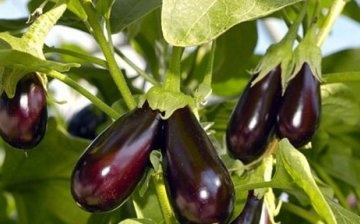
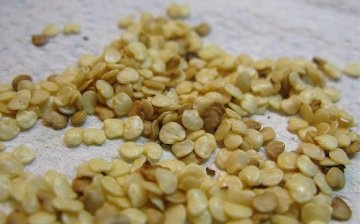
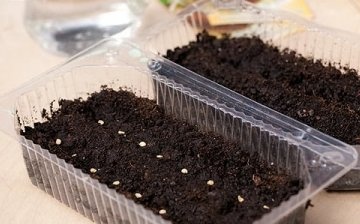

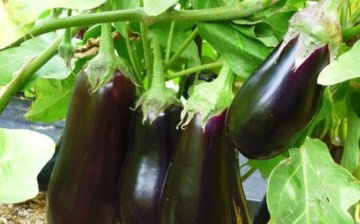
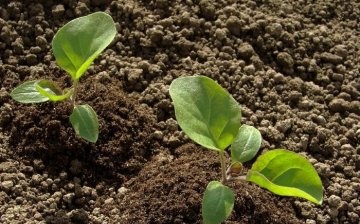
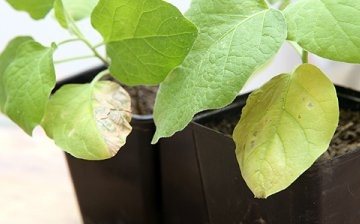
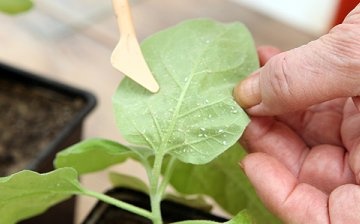
















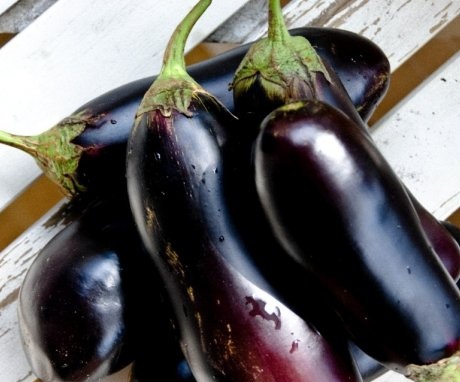
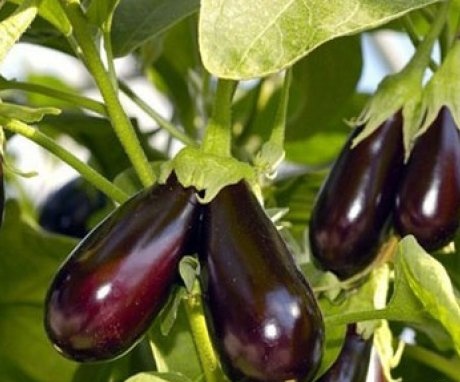
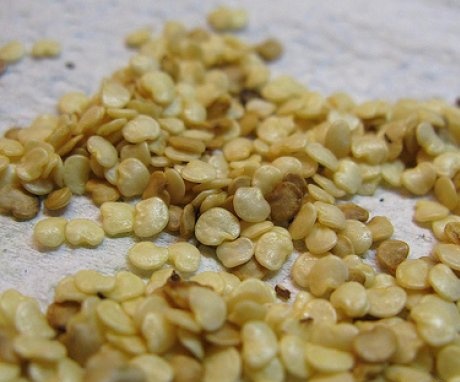
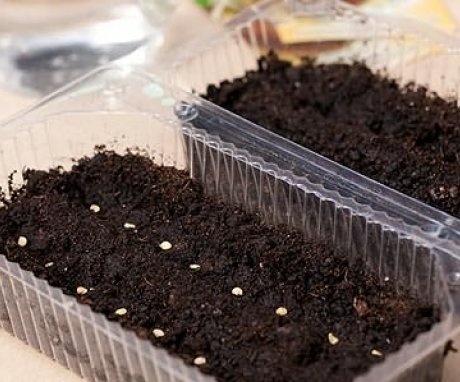
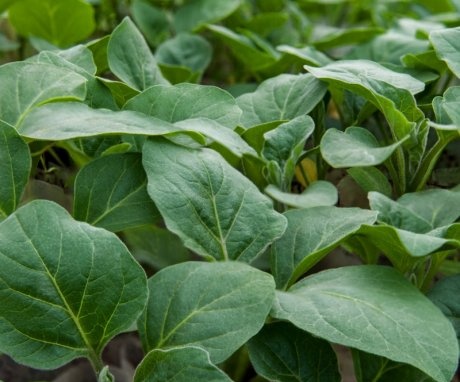
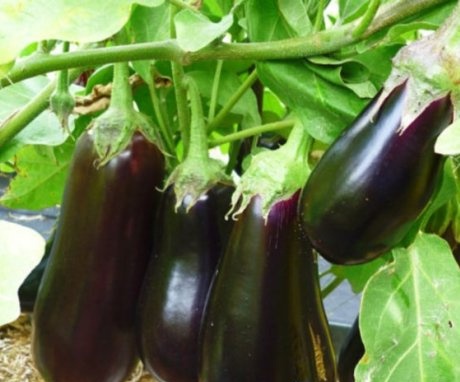
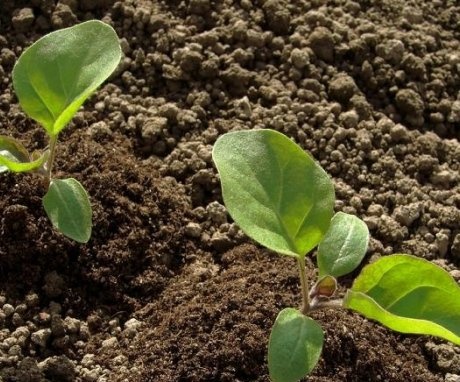

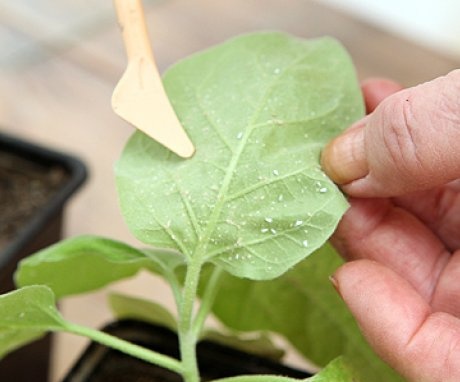

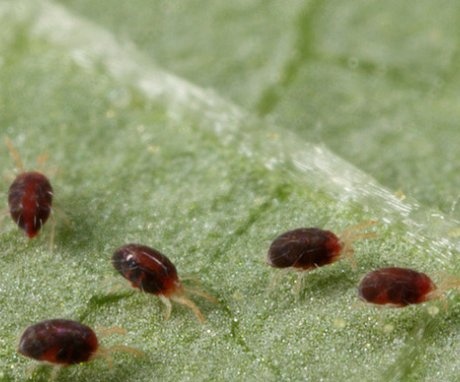

We do not grow eggplants in the garden, since caring for them is difficult, and pests eat this vegetable quite quickly, and we try to avoid insecticides so that they do not accumulate in vegetables.
To grow eggplants, they must be well watered, since they love water very much, people who cannot do this, it is better for them to refuse to grow eggplants, since the work will not pay off.